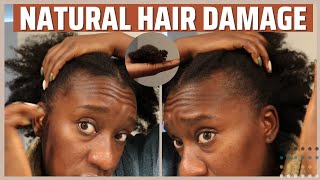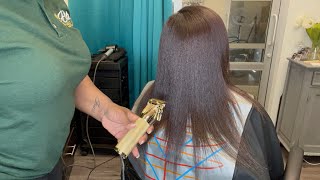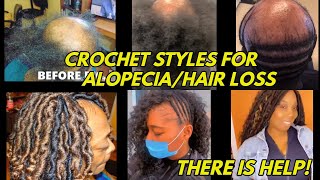Back To Basics - 4 Simple Ways to Repair Damaged Hair
 Hair gets damaged; it’s unfortunate, but it happens. Hair damage can be caused by anything from applying dye wrongly (or using an incompatible dye) to using sulfate-rich shampoos, chemical processing, over manipulation and flat ironing. Whatever the cause, here are some simple solutions to help you improve your hair’s health.
Hair gets damaged; it’s unfortunate, but it happens. Hair damage can be caused by anything from applying dye wrongly (or using an incompatible dye) to using sulfate-rich shampoos, chemical processing, over manipulation and flat ironing. Whatever the cause, here are some simple solutions to help you improve your hair’s health.
1. Use conditioners
Conditioners are vital to enhance the look and feel of your damaged hair. If your hair has become brittle and dry, use a deep conditioner*. Intense conditioners can enter your hair shaft and lodge moisturizing agents and proteins, which help to hydrate your hair and repair the damaged areas.
Intense conditioners can also plant oils* within or onto your hair. When looking for a deep conditioner*, select one with coconut oil*; this oil penetrates the hair shaft and helps your hair in preventing protein loss. If the damage is severe and your hair is losing its elasticity and breaking, a reconstructor is best. It has proteins that will fill in cracks in the damaged regions on the hair shaft and within it.
2. Eat healthy
Eat lots more vegetables and fruits, especially those rich in vitamin E* and biotin*; these will help to restore your damaged hair. This means you should eat lots of spinach, broccoli and avocados. You should also increase the amount of water you drink; six glasses or less just won’t do it. The water will rehydrate your follicles and replace your damaged strands with strong and healthy hair.
3. Remove the damaged strands
Cut off your split ends and the unhealthy parts of your hair–either trim it little by little or cut it all off. Your hair will not grow faster, but it will grow fuller and shinier, and will be healthy and strong.
4. Moisturize
Good moisturizers correct imbalances in moisture and hydrate dry and brittle hair. If your hair is like this, it desperately needs water-based moisturizers. They will replace any damaged lipids and hydrate your hair faster and more directly than drinking water.
See the other articles in the back to basics series here >>




